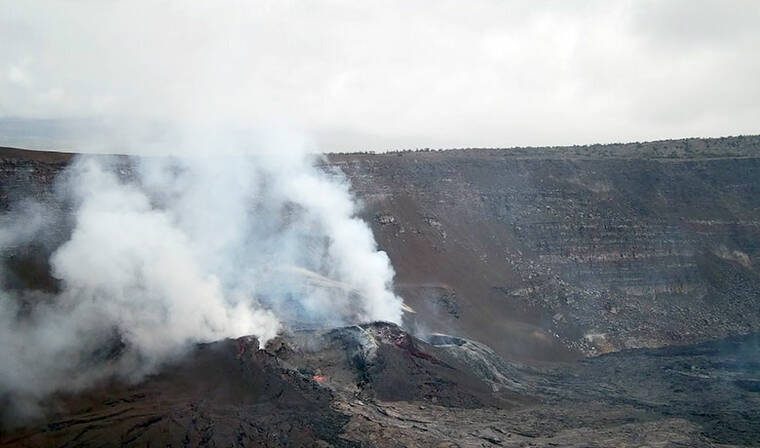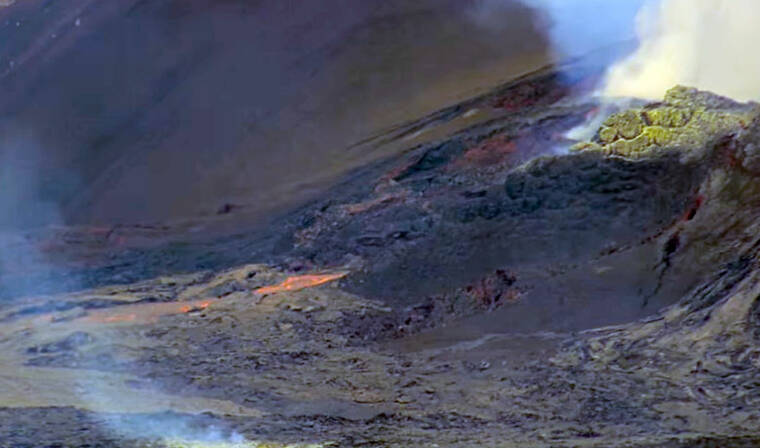1/3
Swipe or click to see more
VIDEO COURTESY USGS
The live view from the eastern rim of the caldera.

2/3
Swipe or click to see more
The view of the Halemaumau crater at the summit of Kilauea from the west.

3/3
Swipe or click to see more
COURTESY U.S. GEOLOGICAL SURVEY
The view of the Halemaumau crater from the eastern rim of the caldera showing lava flowing onto the crater floor.
Scientists said “episode 18” of Kilauea volcano’s ongoing eruption restarted at 7:45 a.m. today with lava flows of 6 to 10 foot high from the south vent.
The lava flow resumed about one-half mile across the crater floor. Glow was observed from the south and north vents most of Saturday night, but scientists did not observe any lava spattering. Scientists said the tilt has leveled off but is not yet deflating typically coinciding with the onset of high fountaining from previous episodes. Strong degassing is occurring from both vents.
“Episode 18” was preceded by low level activity that started at around 9:10 p.m. April 16 with bursts of spatter every 10-20 seconds from the north vent with lava reaching up to several feet high. The lava spatter increased in size and frequency until 9:30 p.m. when 10 to 15 foot high dome fountains appeared. Lava flow overflowed from the north vent around 10:01 p.m., feeding a small lava flow that reached a few hundred feet from the vent. The activity ended at 11:21 p.m.
The current on-again, off-again eruption began Dec. 23 with each previous episode lasting for between 13 hours to 8.5 days, separated by pauses in eruptive activity lasting from less than 24 hours to 12 days, according to HVO.
Flows have been confined to Halemaumau and the southwest side of Kaluapele within Hawai‘i Volcanoes National Park.
No significant activity or changes have been noted along Kilauea’s East Rift Zone or Southwest Rift Zone.
Don’t miss out on what’s happening!
Stay in touch with breaking news, as it happens, conveniently in your email inbox. It’s FREE!
The current Kilauea volcano alert level remains at watch, while the aviation color code remains at orange.
Hazards from each eruption include vog, or volcanic smog, Pele’s hair, and tephra (rock fragments) that can affect the park and nearby communities.
Pele’s hair are thin, golden-brown strands of volcanic glass formed during eruptions when molten lava stretches and cools quickly, according to Hawai‘i Volcanoes National Park. The small fibers can be carried by wind throughout the summit area and surrounding communities, potentially causing skin and eye irritation.
Vog can still linger after each episode ends. During previous pauses, typical sulfur dioxide emissions have been at about 1,200 tonnes per day, officials said. This morning, the plume is being carried toward the south to southwest direction.
